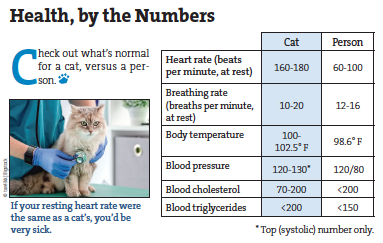Cat’s Tooth Resorbing? Extract It to Save Her From Pain.
Cats don’t get cavities, but sometimes one or more teeth resorb, meaning the body gradually breaks a tooth down so that it eventually is gone both above and below the gum line. It’s not a problem over the long run. House cats don’t even need their teeth to eat dry food, as they’re not big chewers. But during the tooth resorption process, which can take weeks to months, a cat might experience great pain with extreme sensitivity to heat, cold, and pressure.
For that reason, if you or your veterinarian see a tooth resorbing, consider having it extracted. It’s not an inexpensive procedure, in part because anesthesia is involved. But it’s considered the gold standard treatment for tooth resorption; it will leave your cat feeling much more comfortable.

Sit, Kitty!
Cats are not just pretty creatures to look at, like goldfish. They want to interact with you — and learn from you. That is, you can strengthen your bond with your cat by teaching her tricks.
A good one to start with is “Sit!” Hold a treat just above your pet’s head. As her nose goes up to sniff it, her rear will automatically go down. Voila — she is sitting! The moment her tush touches the floor, click a clicker and offer her a tiny, delicious treat that you know she will like. Tell her, “Good sit.” That way, she will begin to associate the action with the word “sit” and will eventually be able to do it even before a treat is proffered.
For any trick you teach, keep practice sessions very short — no more than 2 minutes or so. Also, keep the treats truly tiny, both so she doesn’t gain excess weight and also so she can bring her focus back to you quickly. And train before rather than after meals, so the motivation for being rewarded with food will remain high. Once your cat has the trick down, you will be able to use the word “Sit” without the clicker. And you will only have to reward her randomly rather than every time. (But do always remember to praise her warmly for following through.)




